How do I get rid of cloudiness on my windows — properly, without scratching the glass or wasting hours chasing streaks? That’s what we’re unpacking here. From salt spray on coastal homes to hard water deposits out bush, Aussie windows cop it from every angle. We’ll break down what causes that murky film, what actually cuts through it, and how to keep your glass clear for good.
Ever stood back to admire your freshly cleaned windows only to see they still look cloudy? Bit of a kick in the guts, isn’t it? We’ve scrubbed, squeegeed, even muttered a few choice words — but that stubborn haze just won’t quit. You’re not imagining things. Cloudy windows are one of the most common complaints we hear on the job, and yep, we’ve seen it all.
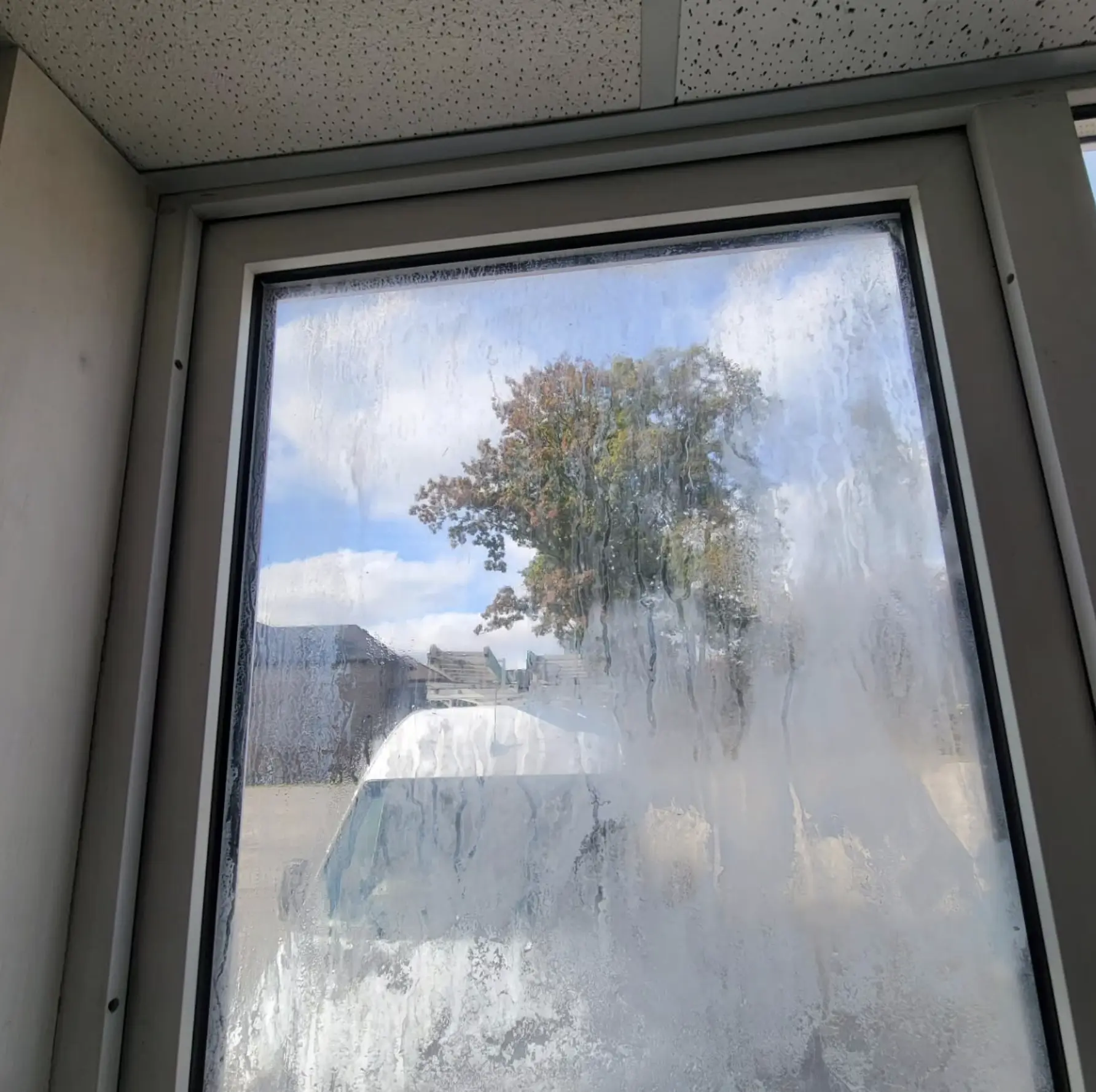
Let’s Pinpoint the Problem
There are three main culprits behind cloudy windows:
- Hard water stains: Bore water, irrigation overspray, or just good ol’ tap water drying on the glass and leaving behind mineral deposits.
- Condensation damage: Moisture sneaking into double-glazed or double-pane windows and fogging up the space between panes.
- Improper cleaning: Using the wrong cleaning tools, chemical cleaners or methods can leave streaks, cloudy residue or even etch the surface.
Sometimes it’s one of these. Often it’s a combo. We once cleaned a cloudy glass window in Gippsland that had water deposits on the outside, dish soap spray bottle residue on the inside and a broken seal in the middle. Triple threat!
Glass Looking Hazy?
If the foggy appearance is trapped inside the glass panes, between two panes, you’ve likely got a failed seal. That’s not a cleaning issue — that’s a structural issue in double pane or double glazed windows.
Once the window seals break, condensation from humidity collecting inside or exposure to water creates foggy windows and permanent damage. This often happens in energy-efficient windows that are ageing or poorly installed.
- Window defogging services: They might drill a tiny hole, suck the moisture out and reseal – but results vary.
- Complimentary window replacement quote: If you’re dealing with condensation buildup or a cloudy appearance between panes, you’ll probably hear this from most pros.
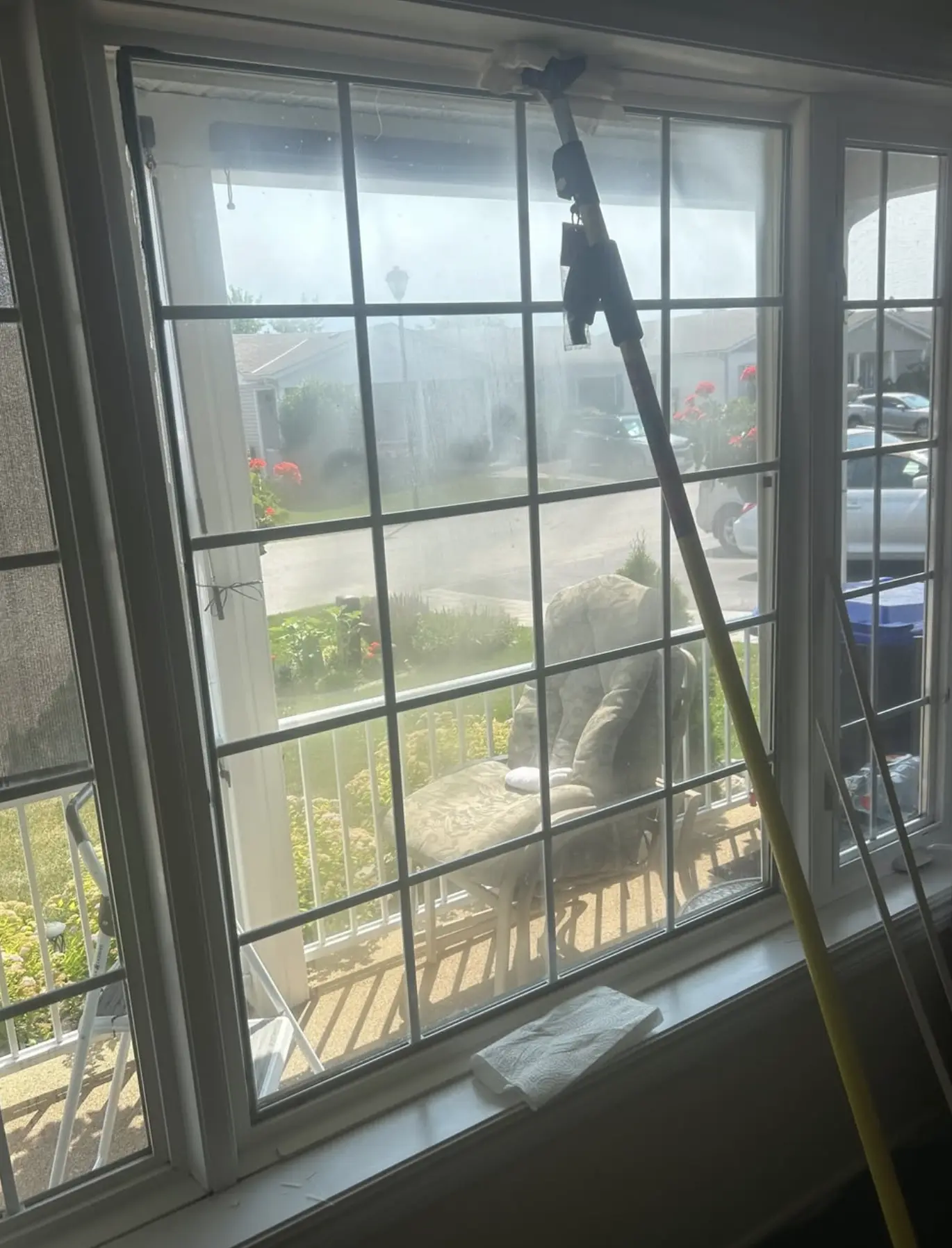
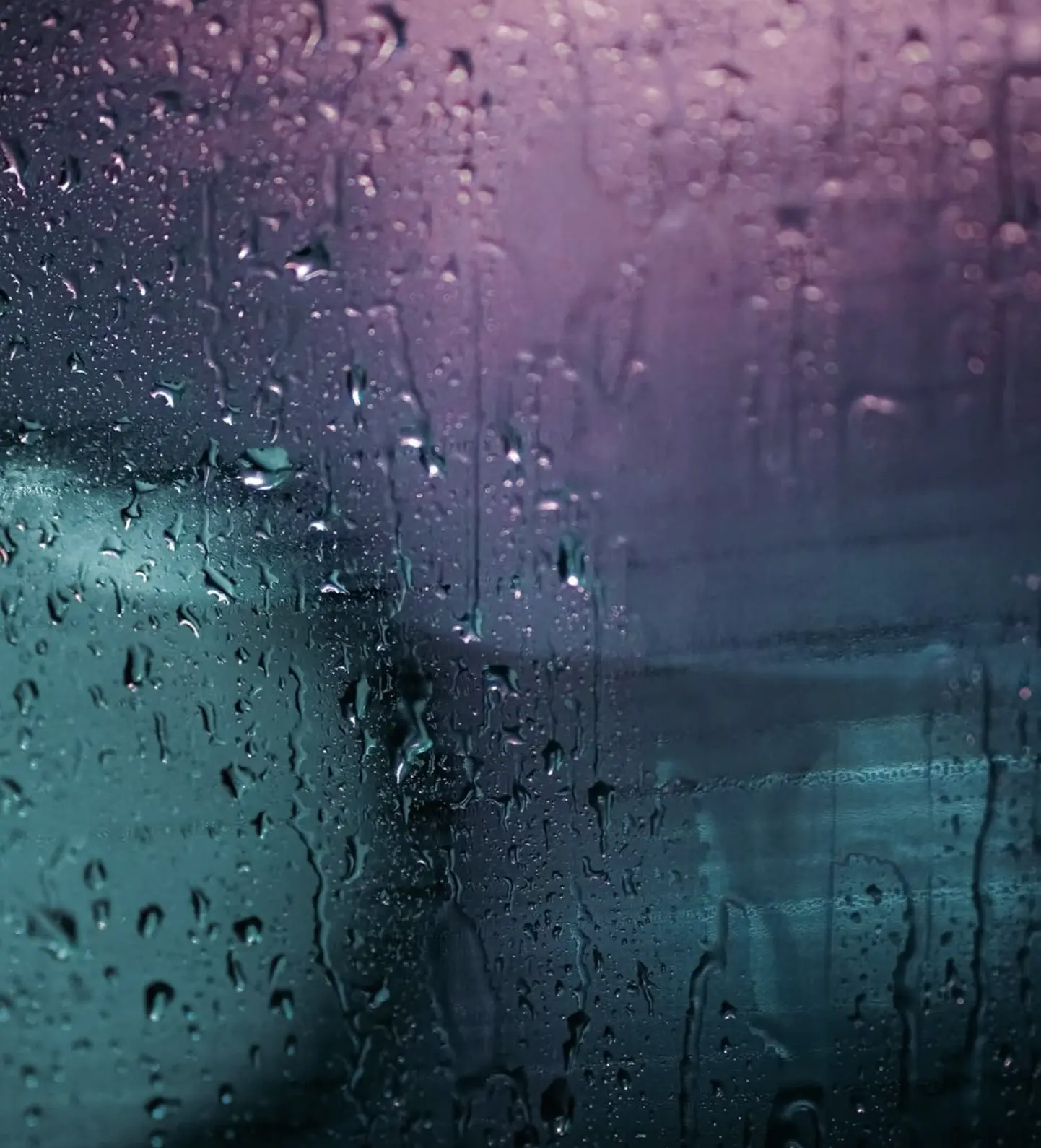
Coastal Pain in the Glass
Hard water is full of minerals like calcium and magnesium. When it dries on glass surfaces, it leaves behind white residue, a mineral buildup that causes that hazy or cloudy look.
Common places we see it:
- Bore-fed sprinkler overspray
- Hose splashback
- Coastal properties are exposed to salt and minerals
- Bathroom shower screens with soap scum and acid rain exposure
How to Remove Hard Water Stains
- White vinegar: Mix with warm water and apply using a spray bottle. Let it sit for 10 minutes. Wipe using circular motions and a dry microfiber cloth.
- Lemon juice: Good for stubborn stains with a bad smell or a distinct smell from vinegar.
- Commercial window cleaning solutions: These cut through mineral deposits but always test on delicate surfaces.
- Polishing compounds: Cerium oxide can help restore a clearer appearance but it’s a delicate process.
Don’t use: Paper towels, metal scrubbers, and cleaners not meant for glass. They damage moderate to severe cases and leave behind dirty buildup or even scratch the entire surface.
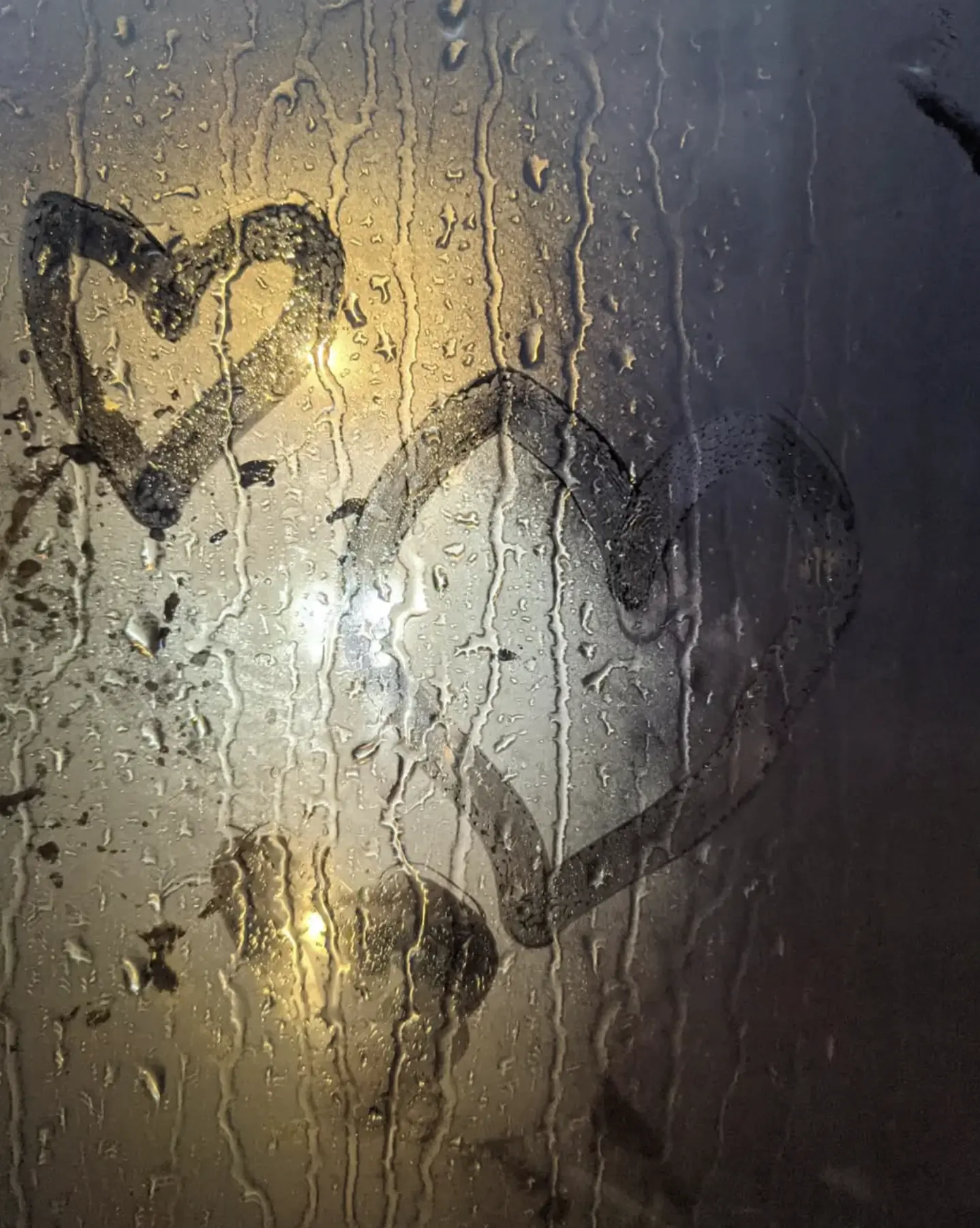
When the Cleaner Makes It Worse
We’ve seen foggy glass windows get worse thanks to well-meaning DIY jobs using concentrated dish soap, newspaper, or even beach towels. Some commercial glass cleaners contain chemicals that bond to grime, leaving behind more cloudy window glass.
We cleaned a set of exterior windows in Melbourne where the owner used a dish soap spray bottle and cold water. The result? Dirty windows with cloudy streaks and a nasty haze. It took us a couple of rinses with warm soapy water and a clean microfiber cloth to fix it.
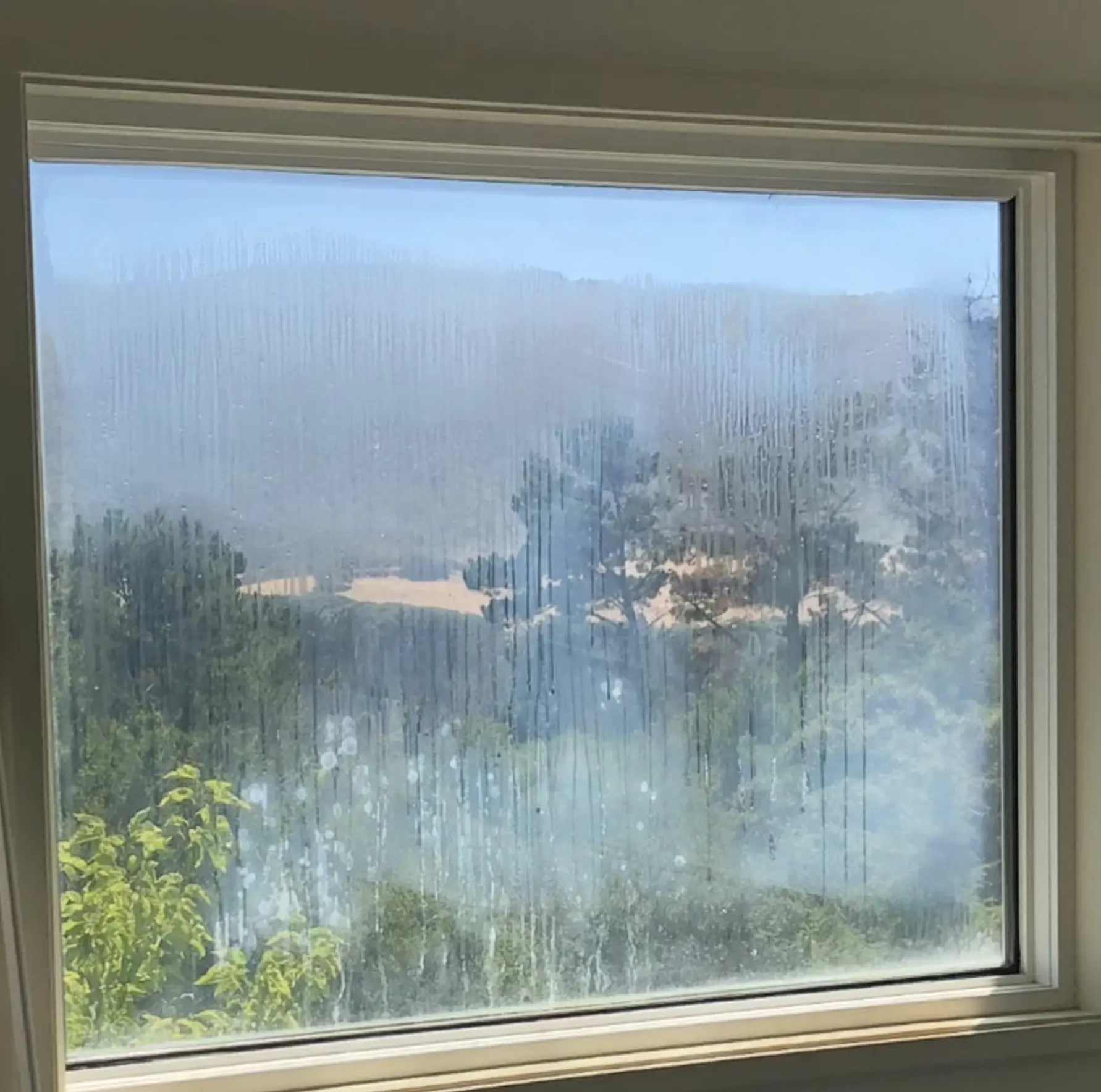
Best Practice:
- Use a mix of water, a splash of vinegar or lemon juice, and a drop of dish soap.
- Spray bottle application, then wipe with a lint-free microfiber cloth or absorbent microfiber cloths.
- Avoid direct sun or cool glass for best results – temperature differences matter.
- Squeegee the entire window using straight pulls.
Stuck with Foggy Glass?
Some cloudiness is etched into the glass – especially if it’s been exposed to water and elements for years. You’ll see this around:
- Pool fencing
- Windows exposed to acid rain or salt spray
- Bathroom exhaust fans near a glass
If you’ve tried every cleaning method and the foggy windows still look like a shag on a rock, you’re probably dealing with:
- Etched mineral buildup
- Permanent stains from the water softener or residue buildup
- Cold rain and excessive humidity damage
Options?
- Cerium oxide polish (for the brave)
- Glass replacement (for the practical)
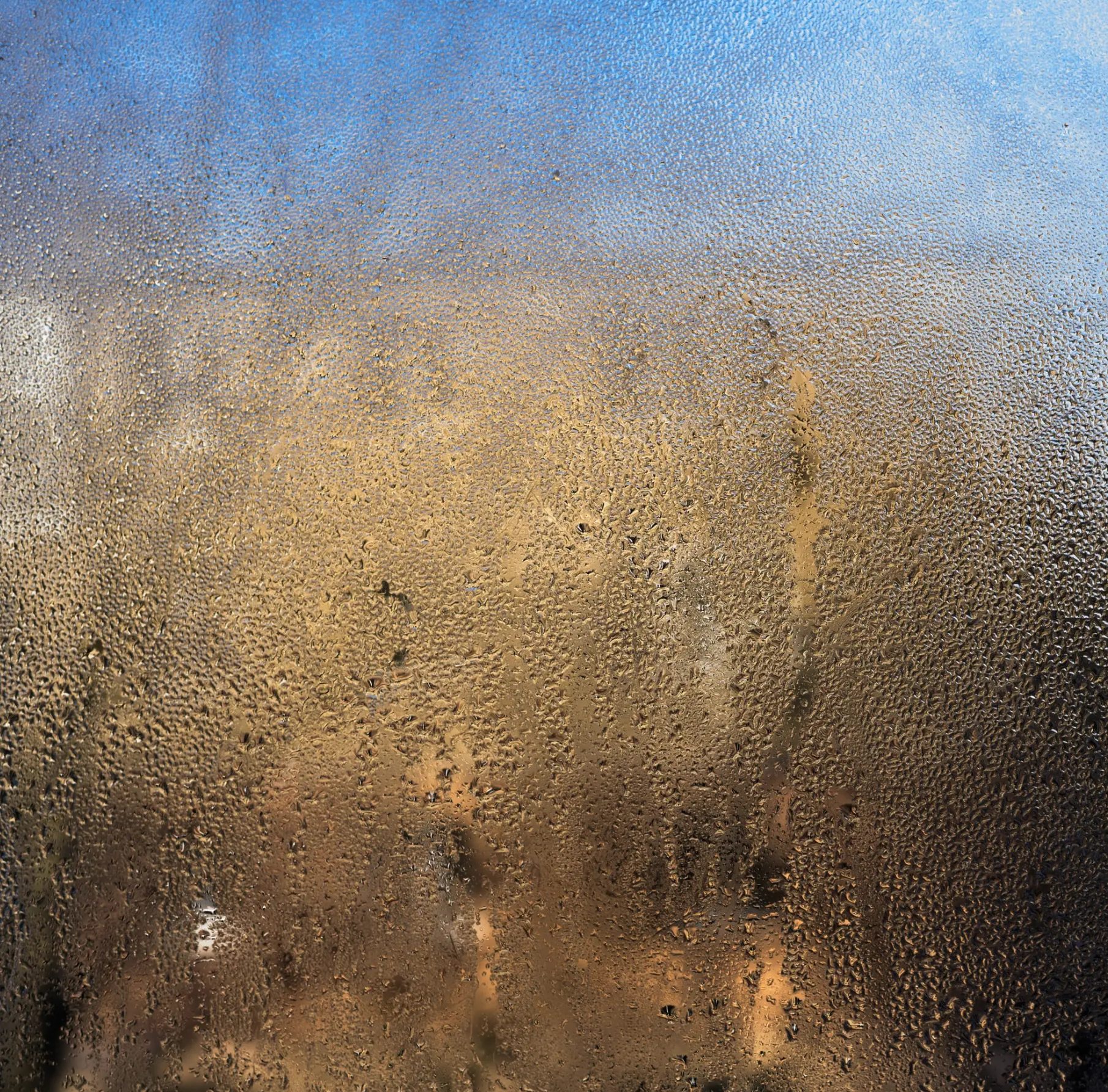
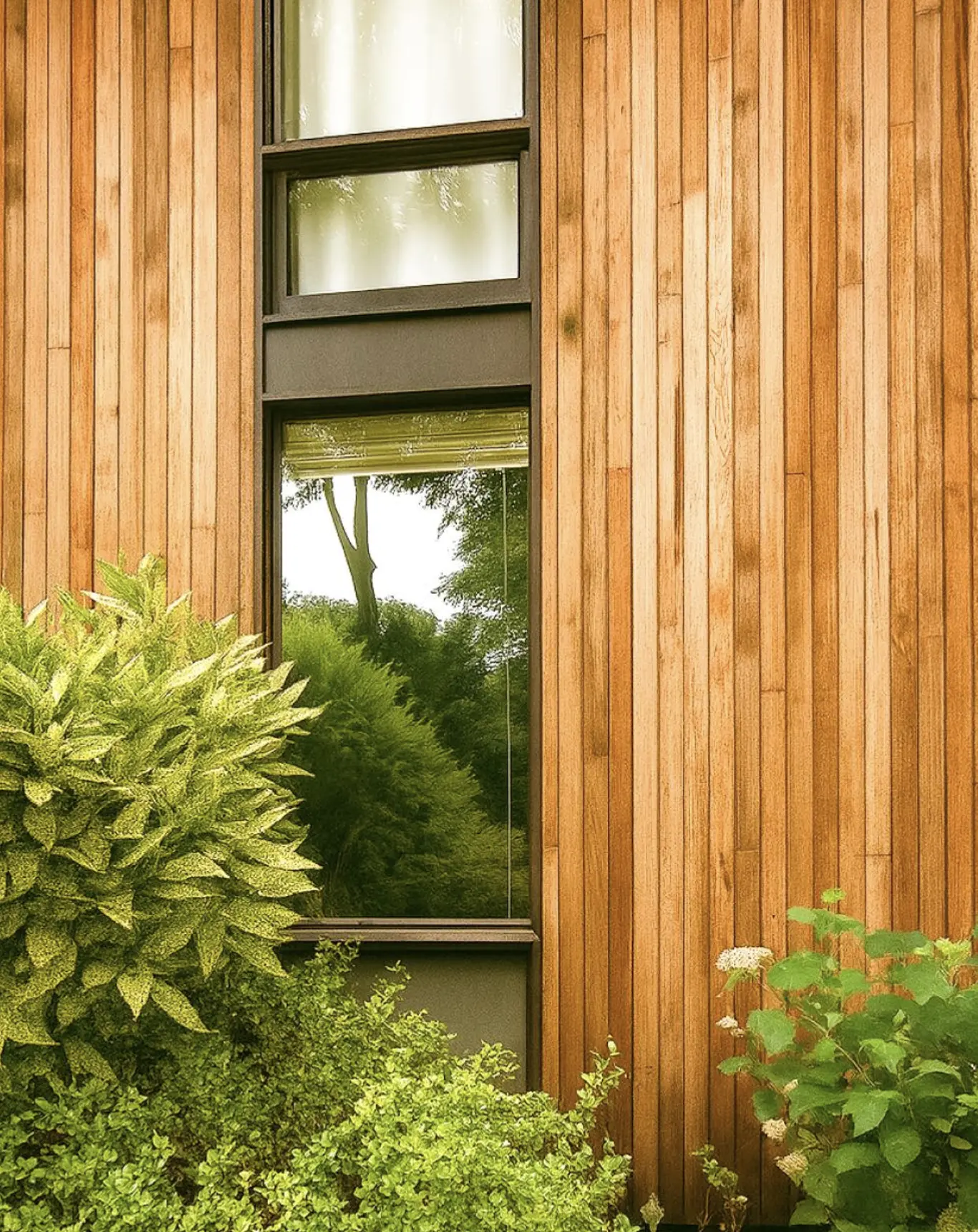
Prevention
Stop the cloudy glass window before it starts. Here’s how:
- Use a water softener if you live in a mineral-heavy area.
- Wipe condensation on windows during humid weather.
- Fix or reseal caulk on the window outside if it looks dodgy.
- Clean window screens – dirt buildup there will transfer to your glass.
- Schedule regular maintenance with professional window cleaners.
How Weather Affects Window Haze
Australia’s extremes love to cause cloudy window issues. Here’s the usual damage depending on location:
- Tropics: Excessive humidity and condensation buildup from indoor humidity levels
- Outback towns: Dry dust windows, dirt buildup and soap scum from hard water
- South coasts: Foggy windows from salt, condensation and foggy mornings
- All regions: Big temperature differences between day and night cause window fog and streaks

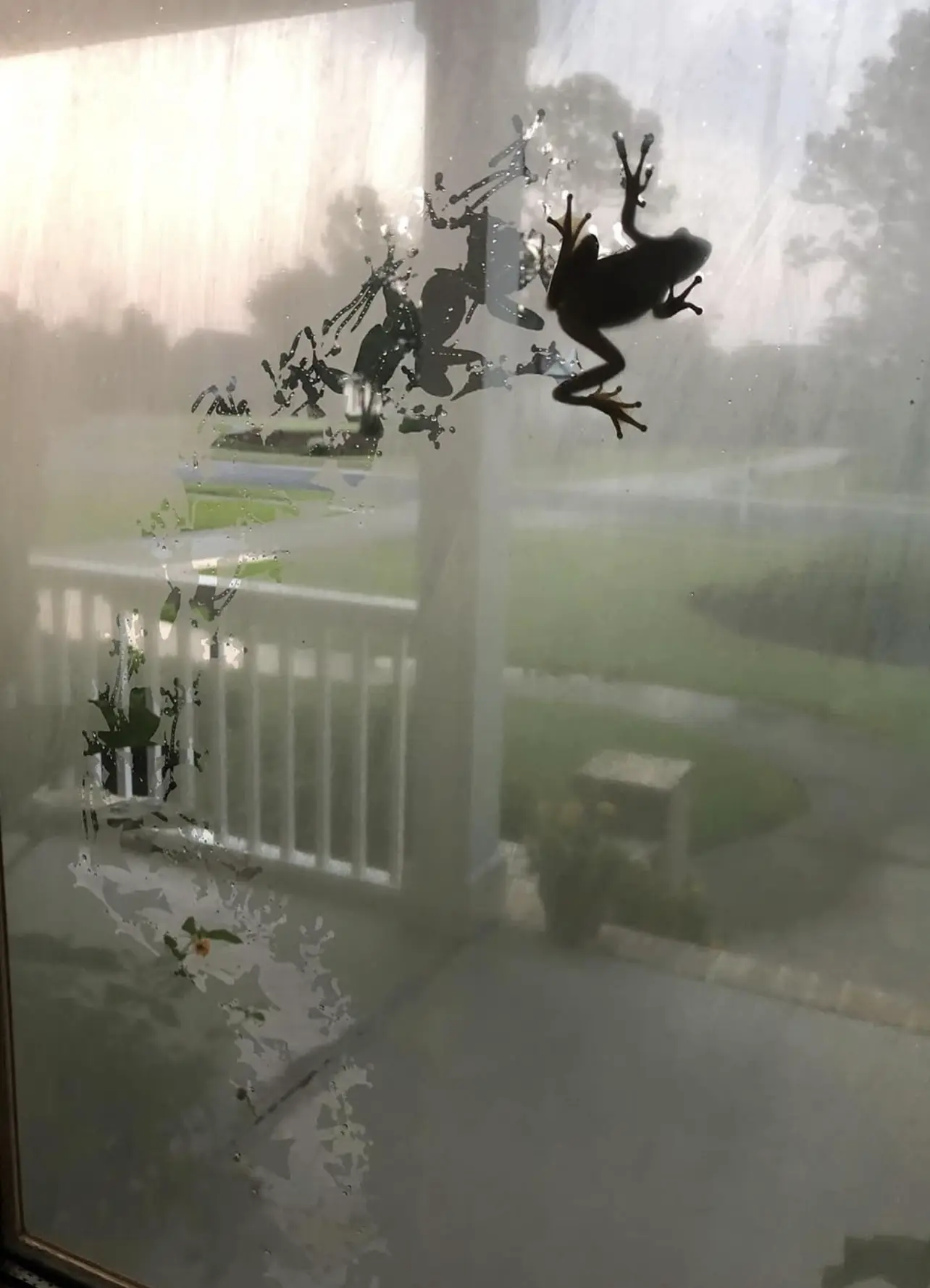
Tools That Actually Work
No need to scrub with a beach towel. Here’s the real arsenal of window cleaning:
- Spray bottle with soapy water or a vinegar mix
- Microfiber cloths and clean cloths (not paper towels or coffee filters)
- Squeegee for streak-free windows
- Polishing pads and cerium oxide for mineral stains
- Distilled warm water or a bowl of water for rinsing
- Glass cleaner if it’s glass-safe and non-ammonia
Use the right tools and your windows will be a breeze.
At Window Cleaning Melbourne Crew, we’ve got the cleaning tools, patience and cheeky commentary to get that crystal clear window clarity back. Got cloudy window glass or fogged up double pane windows? We’ll fix it.
FAQ
Can cloudy windows be restored or do they need replacing?
If it’s from water stains or mineral buildup, they can be cleaned. If it’s condensation between double pane windows or etched damage, you’ll likely need replacement.
What’s the best cleaner for foggy windows?
DIY mix of warm water, lemon juice or vinegar and dish soap. Avoid harsh chemicals and use clean microfiber cloths.
Why are my windows foggy in the morning?
Temperature differences and indoor humidity levels cause condensation on windows. Try a dehumidifier or better bathroom exhaust fans.
Should I use paper towels on my windows?
Nope. Use a lint-free microfiber cloth or a handy drying cloth to avoid streaks and lint.
What causes foggy glass windows in the long term?
It could be a broken seal in double-paned windows, buildup of grime or exposure to water with no regular cleaning routine.
